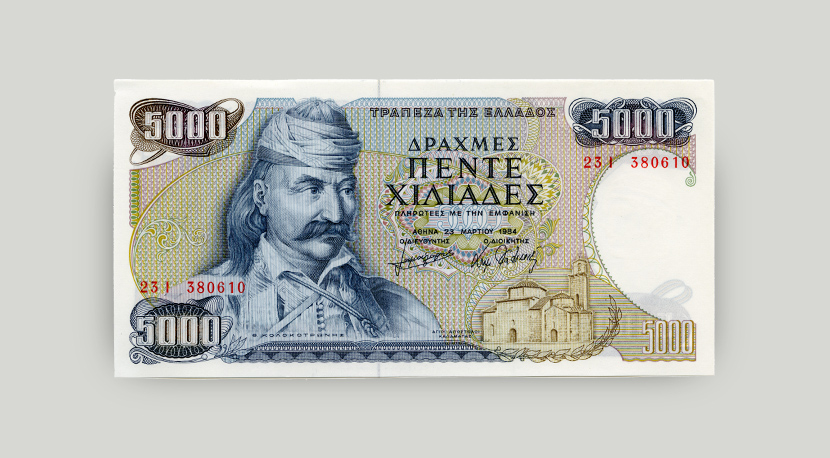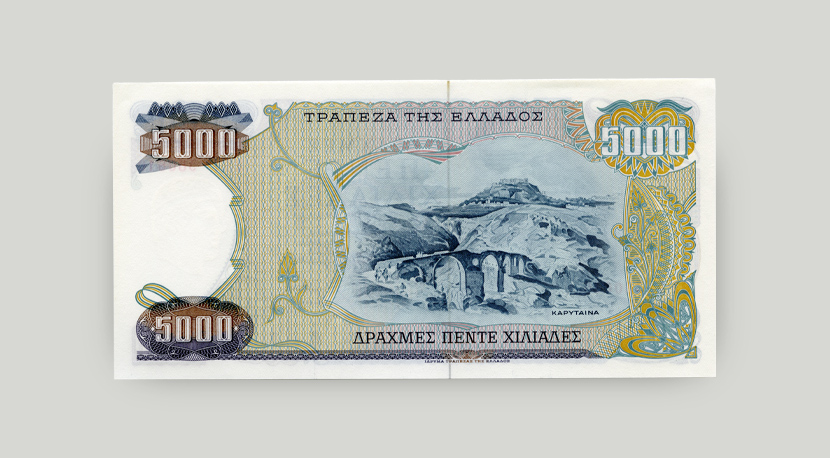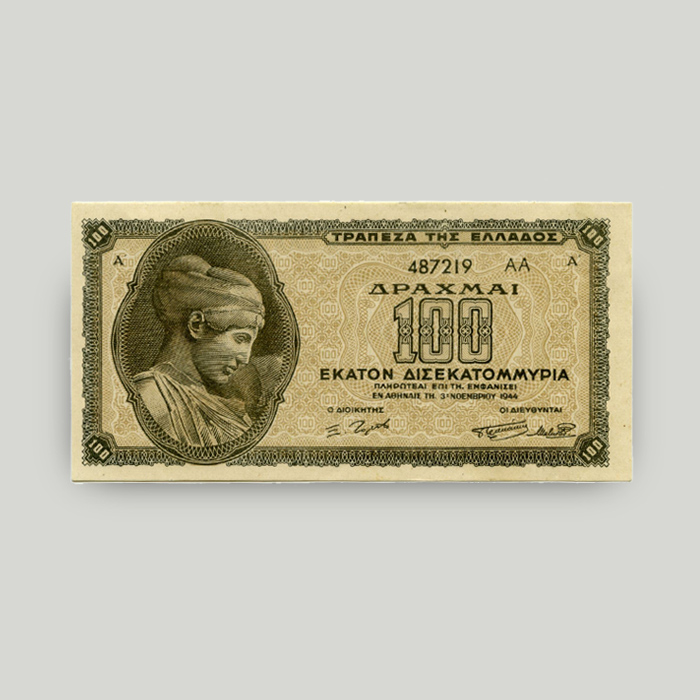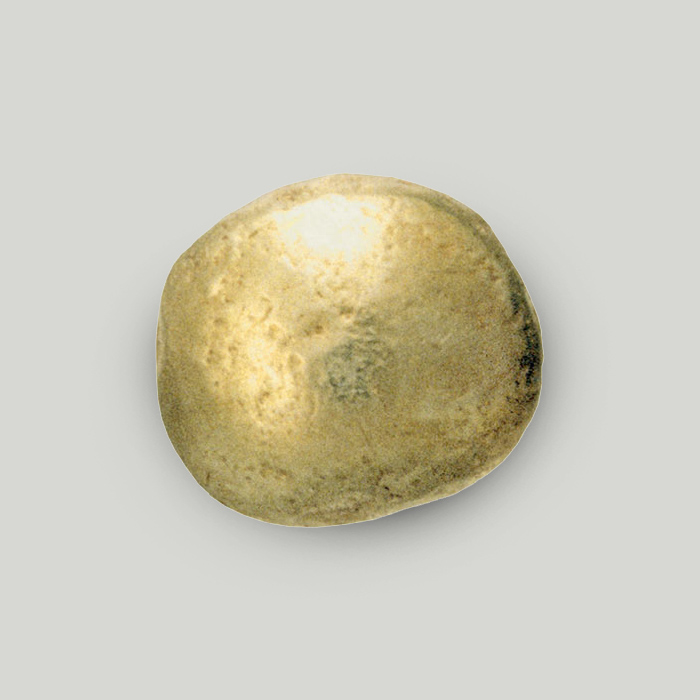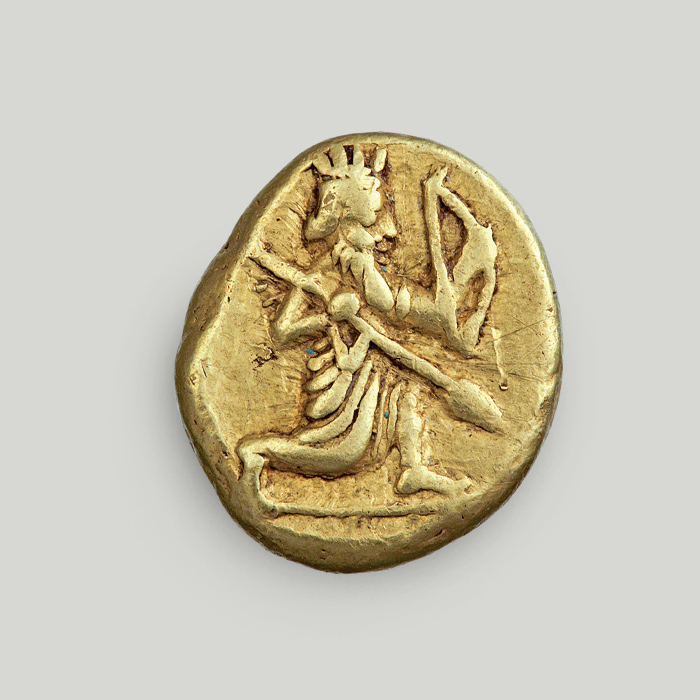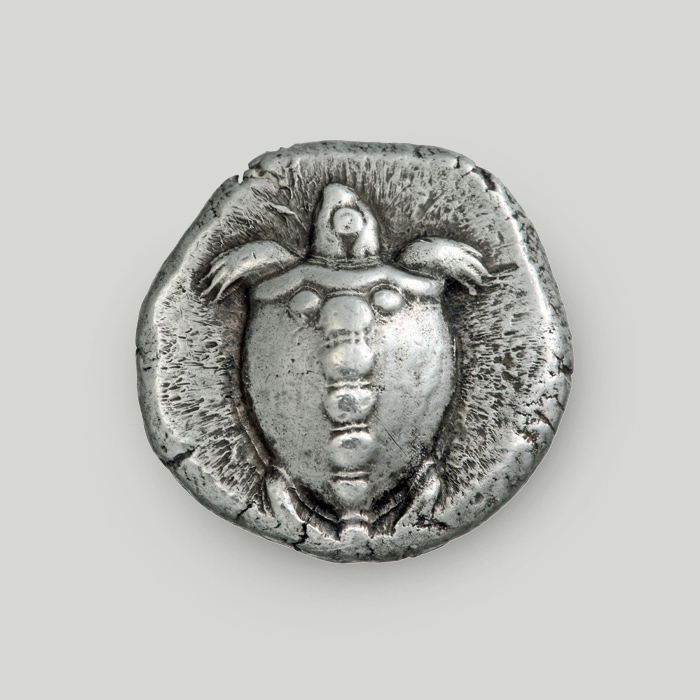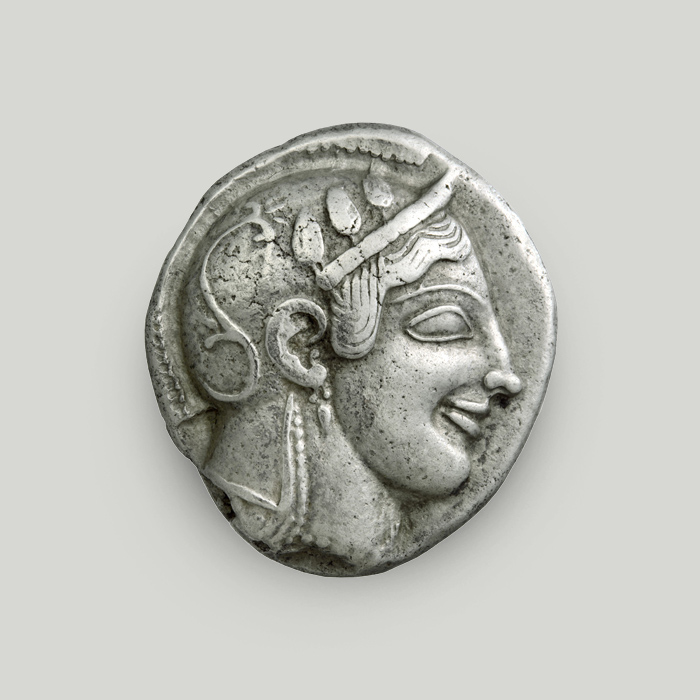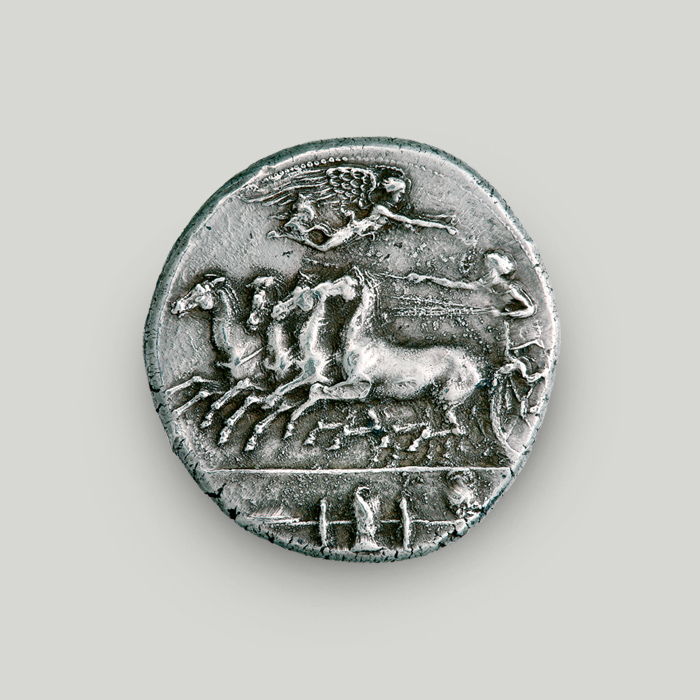5,000 drachma banknote, 1984
The 5,000-drachma banknote commemorates the 1821 Greek War of Independence. Its official date of issue is 23 March 1984, but it was put in circulation on 30 August 1984. That date is the anniversary of the day in 1821 when the town of Kalamata was liberated, and a celebratory Mass was held at the church of the Holy Apostles to mark the victory over the Ottomans. The Bank of Greece issued banknotes with a common theme on both sides to commemorate significant events in the country’s history.
Face
Left: Greek General and independence leader Theodoros Kolokotronis. Bottom right: the church of the Holy Apostles (Agii Apostoli) in Kalamata.
Back
Landscape in Karytaina, a village in the Peloponnese. The vignette depicts the castle and the Byzantine bridge over the Alfeios River.
A note to commemorate the War of Independence
The Bank of Greece issued some banknotes with a common theme on both sides. This was to honour significant landmarks in the country’s history.
The 5,000-drachma banknote of 1984 commemorates the Greek War of Independence along with Theodoros Kolokotronis, one of its iconic leaders.
A significant date of issue
This was the first 5,000-drachma banknote issued after 1950. It was put in circulation on 30 August 1984. At the time, it was the largest denomination note.
The note lists 23 March 1984 as the issue date. This date is the anniversary of the day in 1821 when the town of Kalamata was liberated, and a celebratory Mass was held at the church of the Holy Apostles to mark the victory over the Ottomans.
The Old Man of Morea
Theodoros Kolokotronis (1770-1843) was a general and commander-in-chief of the Greek forces in the Peloponnese during the Greek War of Independence. From the Middle Ages till the late 19th century, the Peloponnese was also known as the “Morea”, hence his sobriquet “the Old Man of Morea”.
Kolokotronis was a highly experienced general, especially in guerrilla warfare. He had been preparing the call to arms since January 1821.
On 23 March 1821, he was a member of the force that captured Kalamata led by Petrompeis Mavromichalis. He also attended the mass held at the church of the Holy Apostles that officially initiated the War of Independence.
He aimed at capturing Tripolitsa (present-day Tripoli in the Peloponnese), the Ottoman administration hub in Morea. He considered the capture of that city crucial for the success of the war.
The victory at Valtetsi (13 May 1821) and the Siege of Tripolitsa (23 September 1821) were possible solely thanks to Kolokotronis’ efforts. His military acumen shone at the battle of Dervenakia, where he crushed the forces led by Mahmud Dramali Pasha (26-28 July 1822).
His feats led to his appointment as commander-in-chief of the Independence forces in the Peloponnese.
The battle at Karytaina
The village of Karytaina is shown on the back of the banknote. This is to commemorate the decisive battle waged there on 27 March 1821. It was among the first instances of armed conflict in the Greek War of Independence.
Kolokotronis received intelligence that an Ottoman force 5,000 strong was marching to Tripolitsa by way of Karytaina, as reinforcements to the Turks besieged within the city walls.
Kolokotronis’ 400 men went up against 1,700 armed Turks close to the church of Agios Athanasios. The battle lasted 6 hours.
Ottoman reinforcements (2,500 men) were brought in from Tripolitsa, and the Greeks were pushed back. After looting Karytaina and setting it on fire, the Ottoman force returned to its base in Tripolitsa.
Despite the defeat, the battle was still decisive as it led to generalised conflict in the Peloponnese, with the Ottomans seeking refuge inside walled cities. Most fled to Tripolitsa, which, however, was finally captured by the Greek forces on 23 September 1821.
The banknote in our publications
The banknote is mentioned in the book Greek Banknotes. Historical Evidence by Dr Dimitra Tsangari. The publication includes the paper money put in circulation throughout the history of the newly-established Greek state: banknotes, coin notes and relevant material. It spans over 180 years of history. A timeline presents key moments in Greek history that were linked to currency circulation.
Buy the publication Greek Banknotes. Historical Evidence on the Alpha Bank e-shop.
The 5,000-drachma banknote of 1984 is on display at the Banknote Museum of the Ionian Bank in Corfu, managed by Alpha Bank.
The exhibit is open to the general public. View the Museum opening hours.
